

|


|
 |
 |
 |
 |
 |
 |
 |
 |
 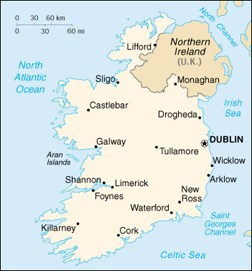 Few places on the planet are as crammed with history as Ireland. Everywhere you
look there are castles, houses and monuments, some even older than the Pyramids.
In Ireland the past is part of the present, part of the people and part of its vibrant
culture.
Few places on the planet are as crammed with history as Ireland. Everywhere you
look there are castles, houses and monuments, some even older than the Pyramids.
In Ireland the past is part of the present, part of the people and part of its vibrant
culture.
The earliest Irish art is found in carvings on megalithic monuments dating from 2500 - 2000 BC. In early historic times, Celtic art predominated, reaching its peak in illuminated manuscripts such as the Book of Durrow and the Book of Kells. While the basic Celtic patterns remain, European influences such as Viking, Romanesque and Gothic styles are seen in work executed later than the 9th century. The large, distinctly Irish, stone crosses, seen across the country date from the 9th and 10th centuries. From the mid-17th century, decorative arts and large-scale building flourished under the influence of contemporary European trends. By the early 19th century neo-classicism , romanticism, and later naturalism, were the dominant forces in painting. They were replaced at the end of that century by impressionism. This was a particularly rich period which gave us artists such as Nathaniel Hone , Walter Osborne, John Lavery, William Leech, John Butler Yeats and William Orpen. Modernism was first explored by the painters Evie Hone and Mainie Jellett. A forum for the new movement was provided by the Irish Exhibition of Living Art, founded in 1943. From this emerged internationally influenced artists such as Louis Le Brocquy, Patrick Scott, Michael Farrall, Robert Ballagh and, to a lesser extent, Patrick Collins, Tony O'Malley, Camille Souter and Barrie Cooke. Monumental sculpture of 19th century is best represented by the work of John Hogan and John Henry Foley whose tradition lasted into the 20th century with such sculptors as Oisín Kelly, Séamas Murphy and Hilary Heron. Contemporary sculptors include Brian King, John Behan, Michael Bulfin, Michael Warran and Eilis O' Connell. What's the spoken language? There are two official languages in Ireland: Irish, which is the national language, and English which is the language of the majority of the population. Irish is a Celtic language, closely related to Scottish Gaelic, Welsh and Breton. It was the language of the vast majority of the population until the early 19th century. The shift to English happened quickly and by 1891 it was being spoken by over 85% of the population. The early 20th century saw a national cultural revival as well as the establishment of an independent Irish State. Subsequent promotion of the Irish language by the state has preserved existing usage and increased bilingualism. Latest figures available show that 32% of adults claim a knowledge of the language. Irish is the principle language in areas known as Gaeltachts, situated mainly along the western seaboard. A State authority, Udaras na Gaeltachta, promotes industrial development in these areas. Bord na Gaeilge (the Irish Language Board), also a State agency, promotes the use of Irish throughout the country and as a core school subject up to secondary. A growing number of schools, known as Gaelscoil (all-Irish Schools), offer tuition exclusively through the Irish language. Radio na Gaeltachta broadcasts nationally in Irish and a new Irish language television service, Telifís na Gaeilge was launched in November 1996. Driving This can be a real pleasure since Irish roads are the least congested in Europe. Here is some useful information for driving in Ireland. REMEMBER TO DRIVE ON THE LEFT IN IRELAND. Unless signs indicate otherwise, speed limits are: In cities 48kph (30mph) Open road 97kph (60mph) Motorway 113kph (70mph) Distances are given in both Kilometres and Miles. Seatbelts must be worn by driver and passengers at all times. The major car hire firms are represented in Ireland, and you will find them represented at airports, ferry ports, and all major cities. Cycling This is a wonderful way to see the countryside at a leisurely page. Throughout the Republic, specially appointed Rent-a-Bike dealers hire out reliable Raleigh Tourer Bicycles. Rental costs from £30 a week upward and a list of dealers can be obtained from the Irish Tourist Board. Your bike may even be delivered to the Airport ready for your arrival. Horse-drawn caravans Horse drawn caravans are available for hire in counties Cork, Kerry and Wicklow. It is a wonderful, relaxing way to appreciate the countryside. It is, however, slow. Expect to cover about 10 miles per day. Be prepared too for some work - feeding, grooming and harnessing your horse can be time consuming and take effort. The caravans are generally designed to cater for four persons and are fairly basic. They come with a gas cooker and utensils, crockery etc. are provided. They do not, however, have toilet facilities. In high season, expect to pay £400-£500 for a week's hire plus about £7 per night for overnight parking. Inland waterways The three main waterways for cruising are the River Shannon, the Grand Canal and the River Erne. All three are exceptional for fishing and birdwatching. In the Republic, six approved companies offer cabin cruisers for hire on the River Shannon and two on the Grand Canal. Cruisers range in size from two to ten berths, all have refrigerators and gas cookers, most have heating, hot water and showers. Dinghies, charts and safety equipment are included in the package. Experience in handling a boat is an advantage, but not a prerequisite. Training will be provided. Trains and buses In the Republic of Ireland, the State transport authority, CIE (Coras Iompair Eireann) is the umbrella body for three companies. Dublin Bus (Serving the city), Bus Eireann (serving provincial areas from Dublin) and Irish Rail (Operating inter-city trains as well as the Dublin Area Rapid Transit (DART) system.) Timetables for bus and train services, including details of various money-saving commuter and tourist tickets, are sold in outlets throughout the city. For bus and train information within Ireland. Tel: 01 873 4222 (Dublin Bus) Tel: 01 836 6111 (Bus Eireann) Tel: 01 836 6222 (Irish Rail) You can dial direct for a recorded timetable for most mainline rail destinations, check phone directory under Coras Iompair Eireann. The DART rail service provides an efficient means of travel along the eastern coastal strip between Bray and Howth. Work has begun on an extension to Greystones. There is a comprehensive bus network servicing routes throughout the city, but bus times tend to be unpredictable. There are also daily bus services to many provincial towns including Cork, Galway, Limerick and Waterford. Eurail passes are valid for bus and train travel everywhere in Ireland, excluding city services. CIE offers reduced rate rambler passes providing unlimited bus and train travel for 8 to 15 days, excluding city services. Tickets can be bought from any bus or train station in the Republic of Ireland or through a travel agent abroad. Cabs & taxis There are metered cabs (also called taxis) available at various locations such as railway stations, ports, airports and taxi ranks in main cities. Elsewhere, it is possible to book hackney cabs where fares are agreed by arrangement with the driver in advance. Details are available in the telephone directories Passports and visas Passports are not required by British citizens born in the United Kingdom and travelling from Britain, identification may be needed. Citizens of European Union states and Switzerland may use a passport or national identity card. All other nationalities must have a passport. Visas Countries whose passport holders DO NOT require visas to enter Ireland Andorra, Hungary, Portugal, Argentina, Iceland, San, Marino, Australia, Israel, Singapore, Austria, Italy, Slovakia, Bahamas, Jamaica, Slovenia Barbados, Japan, South, Africa, Belgium, Korea, (Rep, of, South), Spain, Botswana, Latvia, Swaziland, Brazil, Lesotho, Sweden, Canada Liechtenstein, Switzerland, Chile, Lithuania, Trinidad, &, Tobago, Czech, Republic, Luxembourg, Tonga, Costa, Rica, Malawi, UK, &, colonies, * Cyprus, Malaysia, U.S.A., Denmark, Malta, Uruguay, Ecuador, Mexico, Vatican, City, El, Salvador, Monaco, Venezuela, Estonia, Nauru Western, Samoa, Finland, Netherlands, Zimbabwe, France, New, Zealand, Germany, Nicaragua, Greece, Norway, Grenada, Panama Guatemala, Paraguay, Honduras, Poland * British Dependent Territories (colonies) Anguilla, Bermuda, British Antarctic Territory (South Georgia, South sandwich islands) British Indian Ocean Territory (Chagos Archipelago, Peros Banos, Diego Garcia, Danger Island), Cayman Islands, Falkland Islands and dependencies, Gibraltar, Hong Kong**, Montserrat, Pitcairn, (Henderson, Ducie and Oneno Islands), St. Helena and dependencies (Ascension Island, Tristan Da Cunha), the sovereign base areas of Akrotiri and Dhekelia, Turks and Caicos Island, British Virgin Islands. TRANSIT VISAS ARE REQUIRED BY NATIONALS OF THE FOLLOWING COUNTRIES: Albania, Bulgaria, Cuba, Iran, Romania,Lebanon, Moldova, Montenegro, Serbia, Somalia, Sri Lanka **NOTE: A PERSON IN POSSESSION OF A HONG KONG CERTIFICATE OF IDENTITY REQUIRES AN ENTRY VISA FOR THE STATE. Pets & quarantine There are no restrictions on importing a dog or cat from Britain, the Channel Islands or the Isle of Man, provided your pet is coming directly and has been resident there for at least six months. All animals entering Ireland from other countries must be quarantined for a period of six months. This is to protect against the introduction of rabies. Health insurance and medical treatment The Irish National Health Plan does not cover United States or Canadian visitors. Ask your insurance agent or broker before you travel if your health plan is valid in Ireland. EU Citizens are entitled to free hospital treatment in a public ward and should obtain a E111 form prior to departure. This should be presented to the doctor or hospital, along with identification, if and when required. If you think you are entitled to cash benefits, you should apply within three days of becoming ill to: Department Of Social Welfare EU Records Floor 1 O'Connell Bridge House, Dublin 2 Ireland. Visitors from other countries should check with their insurance agent or broker before travelling. Disabled visitors A growing number of hotels and guesthouses are adapting their facilities for people with disabilities. Details are included with the information about individual places to stay. For more detailed information, a country by county fact sheet is available from: Access Department The National Rehabilitation Board 25 Clyde Road Dublin 4 Ireland Facilities for disabled visitors - DTour site approved by the Irish National Rehabilitation Board. Electricity Mains electricity is supplied at 220 Volts (50 cycles). Plugs are flat with three pins. An adapter is needed to convert to the right plug size. A transformer is needed to convert American appliances (except for dual-voltage equipment which needs only an adapter). The following are the public holidays in the Republic of Ireland. Most companies and shops are closed on these days. January 1st: New Year's Day March 17th: St. Patrick's Day Friday before Easter: Good Friday Monday after Easter: Easter Monday First Monday in May: May Day Holiday First Monday in June: June Holiday First Monday in August: August Holiday Last Monday in October: October Holiday December 25th: Christmas Day December 26th: St. Stephen's Day December 31th: New Year's Eve Radio and television National radio and television services are operated by Radio Telefís Éireann (RTE), the public broadcasting company which transmits on two television and five radio channels. British radio and television programming and Satellite channels (including CNN) are also widely available. Irish speakers are served by RTE's dedicated radio channel Radio na Gaeltachta and Teliís na Gaeilge, the Irish language television station which was launched in October 1996. The 1988 Radio and Television Act established The Independent Radio and Television Commission which has responsibility for licensing and overseeing independent radio and television broadcasting. In recent years, quite an number of independent local and community radio initiatives have emerged across the country, gaining substantial audience. What to buy in Ireland Ireland offers a wide range of goods which reflect the quality and craftsmanship of her traditional industries. The influence of Irish Celtic art can be seen in many goods such as lead crystal, chinaware and jewellery. Traditional wool and linen skills can be seen in today's knitwear and haute couture. Irish Handwoven tweed, traditionally crafted, is acclaimed for its quality, individuality, versatility and colour blends. It is used in a wide range of clothing as well as soft furnishings. Linen weaving is one of Ireland's earliest crafts . As well as the more traditional bed linen and tableware, fashion clothing now makes up a large part of the linen range. Knitwear has undergone a revolution in Ireland in recent years and has become a flagship small industry. The intricate stitch work of the traditional Aran sweater has been incorporated into a wide variety of stylish designs and patterns. The patterns of the original báinín sweater (so called because of the undyed wool from the Aran Islands which was used to knit them) was unwritten and handed down from family to family. Glass factories existed in many parts of Ireland until the early nineteenth century when heavy duties forced most to close. Today's industry is a restoration of the old craft and glass-cutting companies now produce fine crystal and cut-glass in Waterford, Cork, Cavan, Galway, Kilkenny, Tipperary, Tyrone, Sligo and Dublin. Handblown glass is produced in Jerpoint in Kilkenny as well as in Kerry, Dublin and Tipperary. Pottery The ceramic industry is flourishing in Ireland and factories, as well as studio potteries, produce a variety of designs in ovenware, tableware and decorative items throughout the country. Belleek Pottery, in Fermanagh, is in operation since l857, and is widely acclaimed. Irish porcelain is produced too in Cork, Clare, Galway, Leitrim and Kilkenny. Silver The working of precious metals in Ireland dates from about 2000 B.C. and the tradition of Celtic ornamentation inspires many of today's jewellery and craftworkers . Handwrought jewellery is available from studios and workshops throughout the country. Hand-made chocolates, smoked salmon, preserves and ready-to-wear clothing are also widely available. telephones Public phones in Ireland There are public telephones in many outdoor locations, as well as in Telecentres, public buildings - including rail and bus stations, shops, pubs, restaurants and hotels. Local, trunk and international calls can be dialled direct from these phones. Telecom Eireann, the national phone company, has introduced Cardphones in cities and towns throughout Ireland. Cards can be purchased in Telecentres as well as post offices and retail outlets, displaying the Callcard sign. Cards can be purchased in 10, 20, 50 and 100 unit denominations. Operating instructions are displayed in each kiosk or on the payphone itself. For location of Cardphones and Callcard Agents ring Freefone 1800 250 250. A list of all Irish regional codes and International direct dialling codes is contained in the front of the telephone directory. International credit cards Credit cards from most countries are accepted by the international telephone exchange for costs incurred by calls back to the country in which the card was issued. Emergency Numbers In case of emergency, Dial 999 and ask the operator for the emergency service you require: Fire, Gardaí (Police), Ambulance, boat and coastal Rescue, Mountain and Cave rescue. When the emergency service answers, state the address or location at which help is needed. Calls to these services are free of charge. currency The Irish Pound (or Punt), is made up of 100 pence. Please check with your bank for rates of exchange. Punts can be purchased at foreign exchange departments at your local bank or at any bank in Ireland (including those located at airports which are open for all flight arrivals). ATMs (Automatic Teller Machines) are located at most banks and most accept major credit cards, particularly Visa and MasterCard, as well as Plus and Cirrus debit cards. Sales tax refunds The price of most goods includes value-added tax, or VAT. As a visitor you can have this sales tax refunded at the end of your trip. Be sure to ask for a tax-free shopping form with each purchase and follow the instructions for completion. Tipping In most hotels and restaurants a service charge of 10-15% is added to the bill. A small tip is appreciated for good service. Tipping is not usual in pubs, except when you are served at your table. Cabs are tipped 10%. Climate Ireland's climate is influenced by the relatively warm waters of the Gulf Stream and by the prevailing southwestern winds from the Atlantic. This combination results in an equable climate with temperatures fairly uniform across the whole country. Coldest months: January and February with mean daily air temperatures of 4 to 7 degrees Celsius. Warmest months: July and August with mean temperatures of 14 16 degrees Celsius. Sunniest months: May and June, averaging five to seven hours of sunshine per day. Average annual rainfall: 800-1200mm (31 to 47 inches) in low lying areas 750mm (30 inches) in some Eastern areas 1500mm (59) inches in parts of the west 2000 mm (79 inches) or more In mountainous areas Administrative divisions The Republic of Ireland is a parliamentary democracy with two houses of parliament, an elected President who is head of state and a prime minister (Taoiseach) who is head of government. Northern Ireland is part of the UK (the United Kingdom of Great Britain and Northern Ireland) and is governed directly from London Ireland consists of four provinces which are broken down into 32 counties as follows:. ULSTER: Cavan, Donegal, Monaghan (all in the Republic), Antrim, Armagh, Derry, Down, Fermanagh and Tyrone (all in Northern Ireland). LEINSTER: Carlow, Dublin, Kildare, Kilkenny, Laois, Longford, Louth, Meath, Offaly, Westmeath, Wexford and Wicklow. MUNSTER: Clare, Cork, Kerry, Limerick, Tipperary and Waterford. CONNAUGHT: Sligo, Mayo, Galway, Roscommon and Leitrim. Position: Ireland is 51.5 degrees and 55.5 degrees north latitude and 5.5 degrees and 10.5 degrees west longitude. The island of Ireland is just west of the United Kingdom and is the westernmost island in Europe. Size: Width: 170 miles (275 kilometres) at its widest point. Length: 301 (486 kilometres) at its longest. Total coastline: 3,172 kilometres of coastline ( 1,970 miles) Population The population of the Republic of Ireland is estimated at 3,621,000 (in 1996). Of those, over 1 million live in the greater Dublin area. Ireland has a young population, with 44% of the population under 25. What can you do in ireland? For a relatively small island Ireland offers an extraordinarily wide variety of countryside and coastline. An ecologically clean environment also makes for pure air, clear water and unspoiled stretches of countryside. Entertaining and being entertained are central to a holiday in Ireland. Culture and history: Ireland has a rich history and its evidence is found everywhere in the ruins of ancient monuments and castles, some of which are older even than the pyramids. The country's past remains part of the everyday consciousness and creativity of its people. Shopping Delights: Shopping in Ireland offers a range of goods that reflect the quality and craftsmanship of the traditional industries. Irish Celtic art is used to ornament lead crystal, chinaware and jewellery. Time-worn skills with wool and linen are still used in quality knitwear and couture. Eating And Drinking: Ireland's ecologically friendly environment produces fine food and drink . Restaurants, serving haute cuisine to snack food, abound. A great deal of socialising goes on in Ireland's pubs ,with music and talk an integral part of an evening in most locals. Places to Stay: The choice is wide when it comes to deciding on a place to stay. Castles, coach houses, cottages and farmhouses vie with hotels and hostels. Prices vary accordingly. Pursuits and pastimes: Golf, fishing, horse riding, walking, cycling and water-sports are all extremely well catered for in Ireland. They are also easily accessible. For quieter pleasure there are castles and ancient ruins to explore. Many of Ireland's best gardens are open to visitors. Capital, coast and country: Dublin's Georgian charm can be enjoyed on walks through a city small enough to enjoy without exhausting. To the north of the city are some of the country's most important historic sites, to the west there are the plains of Kildare and to the south the Wicklow mountains. Southern river valleys: Ireland's south-east corner is a land of sandy beaches and rolling countryside. Wexford county has seaside resorts with long beaches while Kilkenny is a mediaeval town with fine buildings to explore. In Waterford there is the famous crystal factory to visit. The south-east is an ideal introduction to the gentler beauties of Ireland. South coast and kingdom: The mountains and peninsulas of the south and south west coasts offer breathtaking scenery. Tours of Killarney and its lakes, the Ring of Kerry and the Dingle Peninsula illustrate its grandeur. Cork, Ireland's second city, is home to Murphy's stout and host to the world-famous Jazz Festival. Western and Atlantic Limerick and Galway are the main cities of Ireland's West Coast. The latter is famed for for its annual Race Meeting and Oyster Festival, the former as guardian of the mighty River Shannon. Outside Galway city is Connemara, uniquely typical of the western seaboard with its stony land, mountains , rivers and marshes. The Burren, in Co. Clare, is rich in flora and prehistoric monuments. Donegal, on the north-west coast, is one of the least polluted places in Europe and has fine links courses for golfers. To the south is Sligo, Yeats country , where the name places of towns and beauty spots echo the poet's plays and poems. The Great Shannon Basin Starting as a pool in the drumlins of Co. Cavan, the Shannon flows through three great lakes to join the Atlantic some 230 miles south. The Shannon basin has no heavy industry and the river carries no commercial traffic. Cruiser hire companies provide boats and riverside facilities for the growing numbers of visitors. Religion in Ireland The Irish Constitution guarantees freedom of conscience and the free profession and practice of religion to all citizens. According to the 1991 census, Ireland's religions were: Roman Catholic 91% Church of Ireland (Anglican) 2.5% Presbyterian 0.4% Methodist 0.1% Jewish less than 0.1% About 3 percent of the population belonged to other religious groupings or have no specific religious beliefs. Flora and Fauna The flora of Ireland is similar to that found in much of Europe, though smaller in range. The Burren, a unique limestone are in County Clare, contains Arctic-alpine species surviving from the last glaciation together with Mediterranean species in a unique ecological mixture. The Wildlife Act, 1976, protects sixty-eight species of native flora. To date, seventy-six nature reserves and five national parks have been established throughout the country. Ireland has excellent conditions for forestry development, with climate and soil giving a timber yield up to three times that of north-west Europe. Government policy is to expand national planting, which is undertaken by Coillte Teoranta - the State Forestry Company established in 1988. Private afforestation is also increasing significantly. Of the 380 species of wild birds recorded in Ireland, 135 breed in the country. Freshwater species of fish include salmon, char, pollan, eel, pike and brown trout. Amphibia are represented in Ireland by a single native species each of frog, toad (natterjack) and newt but only one native reptile, the common lizard, is found. There are thirty-one species of mammal, including red deer, fox, badger, red squirrel, otter, grey seal, common seal and many cetacean species. Most species of wild animals and all wild birds are protected under the 1976 Wildlife Act. In addition, a hundred special Protection areas for birds have been established, 75 of them under the European Union (EU) Birds Directive. Some of our more interesting species of bird include merlin, peregrine falcons, corncrake and chough. Aghrchitecture The earliest buildings which survive in the Irish countryside are the ring forts, most of which post-date the introduction of Christianity in the 5th century. Hiberno-Romanesque architecture established itself in the 12th century and was superseded by Irish Gothic, which reached its zenith in the 15th century. The introduction of Classicism followed the Cromwellian wars. Most evident, however, are the prime examples of Georgian architecture can be seen in the squares and streets of Dublin, Cork, Limerick, Kilkenny and Armagh. The influence of the Gothic Revival can be seen in many churches and public buildings erected in the 19th century. The 20th century has witnessed the rapid expansion of cities and main towns. Contemporary Irish architects are trying to meet the need for new commercial and community facilities without disturbing the integrity of urban environments. kilkee |

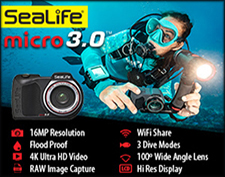
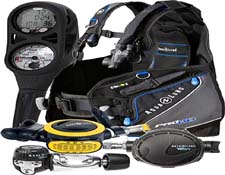
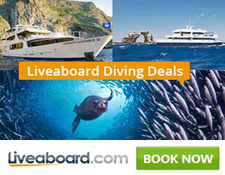


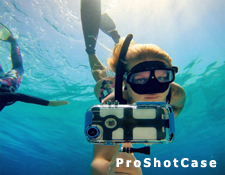
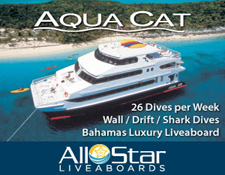
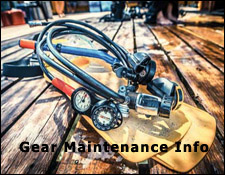



|